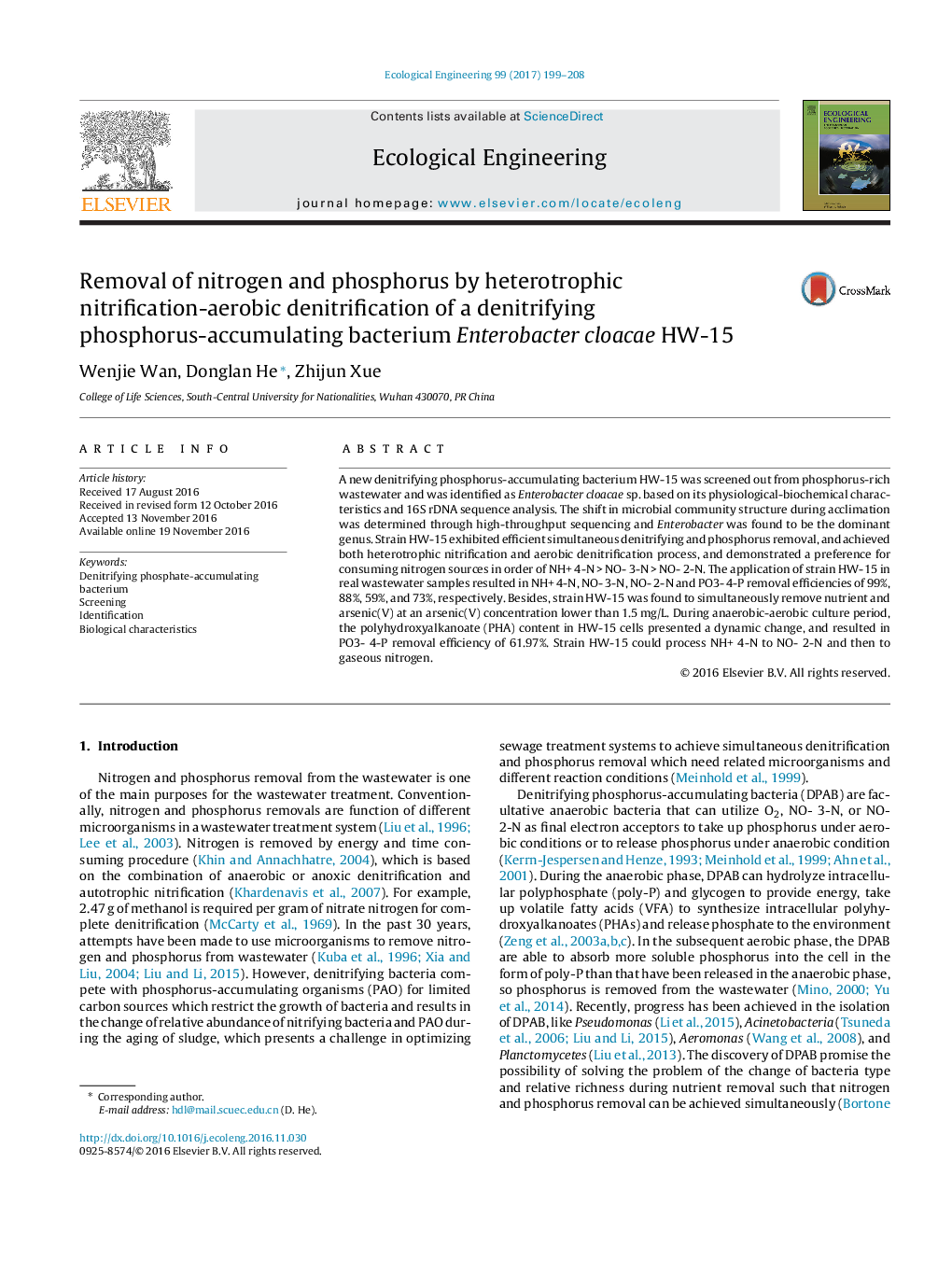| Article ID | Journal | Published Year | Pages | File Type |
|---|---|---|---|---|
| 5743986 | Ecological Engineering | 2017 | 10 Pages |
â¢DPAB were selected in anaerobic-aerobic cycle system.â¢Enterobacter cloacae HW-15 simultaneously remove nitrogen and phosphorus.â¢Polyhydroxyalkanoate represented dynamic change in anaerobic-aerobic condition.
A new denitrifying phosphorus-accumulating bacterium HW-15 was screened out from phosphorus-rich wastewater and was identified as Enterobacter cloacae sp. based on its physiological-biochemical characteristics and 16S rDNA sequence analysis. The shift in microbial community structure during acclimation was determined through high-throughput sequencing and Enterobacter was found to be the dominant genus. Strain HW-15 exhibited efficient simultaneous denitrifying and phosphorus removal, and achieved both heterotrophic nitrification and aerobic denitrification process, and demonstrated a preference for consuming nitrogen sources in order of NH+ 4-NÂ >Â NO- 3-NÂ >Â NO- 2-N. The application of strain HW-15 in real wastewater samples resulted in NH+ 4-N, NO- 3-N, NO- 2-N and PO3- 4-P removal efficiencies of 99%, 88%, 59%, and 73%, respectively. Besides, strain HW-15 was found to simultaneously remove nutrient and arsenic(V) at an arsenic(V) concentration lower than 1.5Â mg/L. During anaerobic-aerobic culture period, the polyhydroxyalkanoate (PHA) content in HW-15 cells presented a dynamic change, and resulted in PO3- 4-P removal efficiency of 61.97%. Strain HW-15 could process NH+ 4-N to NO- 2-N and then to gaseous nitrogen.
